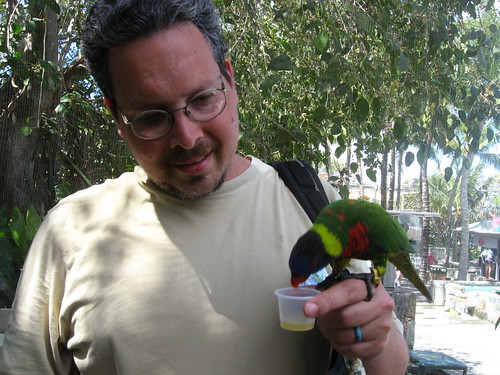🦋 Chile's dark flower
This week I've started Rivera Letelier's Santa MarÃa de las flores negras, Our Lady of the Dark Flowers -- the title is a reference to this anonymous poem, "The Dark Copihue, Flower of the Pampa", published in 1917 commemorating the 1907 massacre at Escuela Santa MarÃa de Iquique:
Soy el obrero pampino
por el burgués esplotado;
soy el paria abandonado
que lucha por su destino;
soy el que labro el camino
 de mi propio deshonor
de mi propio deshonor
regando con mi sudor
estas pampas desoladas;
soy la flor negra y callada
que crece con mi dolor.
I am the pampino worker
Exploited by the owner;
I am the outcast, abandoned
fighting for his destiny;
it is I who lay the roadway
of my own disgrace
irrigating with my sweat
this desolate pampa;
I am the dark, silent flower,
flower that feeds on my sorrow.
A blind man** recites this poem in Chapter 3, among other folk poetry about the workers' struggle. (This seems like an interesting way of interweaving fact and fiction, since of course the poem was not written at the time the novel is set. The author is turning the poem into an element of his fictional world.) The red copihue is Chile's national flower; the poet (who Sergio González Miranda speculates* could be Luis Emilio Recabarren, fixture of Chile's left wing in the early 20th Century) sees a black flower growing from the blood and sweat of the pampino workers.
 *Dr. González Miranda is a professor of sociology at the Universidad Arturo Prat in Antofagasta, and seems like a great source for poetry of the workers' movement in Chile; besides the linked article I also found a piece by him from 2003 called "Habitar la pampa en la palabra: la creación poética del salitre". Professor González Miranda's books are available from Ediciones LOM. **The blind poet might be, if I'm understanding a statement in Chapter 4 correctly, Rosario Calderón, listed by PoesÃa Popular as the author of PoesÃas Pampinas in 1900.... Ah -- no -- I missed a note in Chapter 3 that the blind man's name is Rosario Calderón "just like the famous poet who publishes his works in El Pueblo Obrero."
posted evening of Wednesday, December 29th, 2010
➳ More posts about Our Lady of the Dark Flowers
➳ More posts about Hernán Rivera Letelier
➳ More posts about Readings

Nice poem Jeremy. Good translation from you, great!
posted morning of December 30th, 2010 by Oswaldo Aiffil
|

